By Suzanne A. Marshall from the July 2011 Edition
Expect the Unexpected
Our immediate reaction every time we arrive in Manzanillo for the winter is absolute sensory overload. This is observed with excitement and a happy acceptance of the differences we experience here compared to our many years of living in Canada. Perhaps our sojourn home every spring is the very thing needed to ensure this renewed perspective each year. And it seems to work the other way when we return home in the spring. I love the fact that it helps us avoid taking anything for granted. I treasure this because entering retirement has found me more sensitized to the little nuances of life around me. There was a time when the hectic and busy routines of balancing a career, children and family, might have kept me from noticing the small things. But I do now and am so grateful for my life.
Of course when arriving in Manzanillo it hits you the minute you descend the steps of the aircraft and walk the tarmac to the arrivals area. It feels as though we must drink the air rather than breathe it as we have left a very dry, cool and relatively arid climate. You walk the pavement to the terminal and it sort of squishes under your feet. Suddenly you anticipate the warmth, the beaches, the palm trees, the endless sun and the friends and acquaintances that you will see again.
Having mulled over and pondered with friends the unique environment that is Manzanillo, I’ve concluded that one of the contributors to the unique and eclectic physical environment is the lack of legislated laws, by-laws and zoning restrictions that are a way of life in Canada (probably the U.S.A. as well). It’s neither good nor bad just different, and the more I observe this possibility the more it seems to make sense.
So in Manzanillo you can find a delightful mix of homes, businesses, street vendors, clubs, restaurants, groceries, bakeries, hand -made furnishings, laundries, tailors, schools and flower shops all located side by side, for example. You never know for sure what’s around the corner. Needless to say, it is great fun to go ‘walk about’ and explore new neighbourhoods pretty much anywhere.
You will not find this type of mix where we come from.
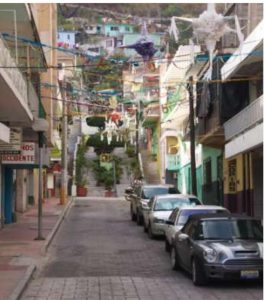
Residences are built with regulated uniformity, special zoning is legislated for businesses and services and restrictions abound as to what we can do on the property that we actually own. Well I suppose that’s OK to some degree as you will rarely find a rowdy hotel and bar behind your house, or a gas station and mechanic shop on the corner; or some idiot spoiling your view of a park across the street because they’ve built a multi-level dwelling right in front of you. So we rely on these laws to keep us safe and content but I do wonder quite often if we haven’t gone completely over-board. Now it seems we contend with urban sprawl, big box stores located in hard to reach zones that require driving on crowded freeways or routes dotted with traffic lights. It is very difficult to find all of the amenities that you use in daily life within your own neighbourhood. Meaning, we very rarely walk anywhere, we drive our children to schools and community arenas and many of us lack exercise and fitness as a result.
So where am I going with all of this? Well by comparison, the unique experiences that we encounter in Manzanillo are just that. Not all of them are positive but most are. We walk and walk and walk. We feel so good after a few months that we’ve decided against bringing or purchasing a car here. It’s cheaper, less hassle and better for us.
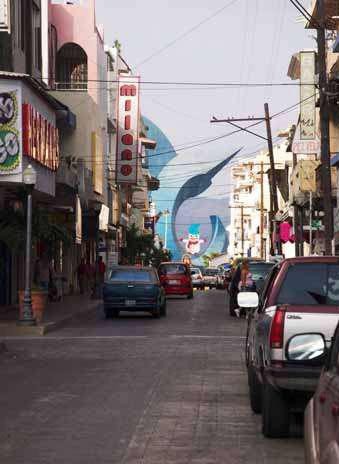
At least while we can still walk! We average 2 – 4 miles walking per day. We shop for groceries, visit the laundry, see a movie, walk for dinners and walk as often as possible.
We haven’t felt this good in years thanks to the accessibility of so many shops and services. If we want to go somewhere too far to walk we take the bus or call a taxi, all of which are still very economical by comparison. If we want to visit Guadalajara or go touring, we rent a car or take one of the great bus services that Mexico offers in extremely comfortable and well equipped vehicles.
Speaking of the town buses, we quite enjoy hopping the buses with the locals and on many occasions have been entertained by buskers strumming guitars and singing for a few pesos, young boys pounding drums and singing for a local charity and bus drivers who will pick you up almost anywhere and drop you off along their route right in front of your favourite restaurant if you ask. (Especially if you entertain them , with your attempts at speaking Spanish!)
On one of our previous visits we were fascinated by the use of scarecrows. Of course, the typical use of scarecrows for us is in farmers’ fields to ward off birds or deer anxious to consume whatever crop is growing. But in the harbour we have actually seen scarecrows built on small boats moored in the bay to ward off the pelicans who like to perch there in great numbers and of course make a terrific mess of bird droppings. How clever is that!

Pelicans on boat without a “scarecrow”
We are always finding new restaurants to enjoy. One in particular serves up the best coconut shrimp I’ve ever tasted
(complete with homemade mango sauce) and whole grilled red snapper equally as yummy. It took many trips to this restaurant before I noticed that the front end and roof of the place on the front street seemed to be supported by a big tree trunk painted the typical white to ward off bugs and such. This is not an untypical sight.
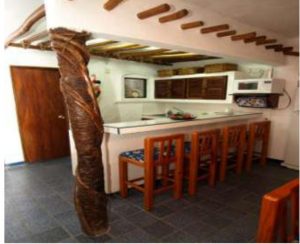
There are a number of different types of trees in Mexico that are varnished and embodied into kitchen designs and ceiling supports as an architectural feature. We actually have this in our own kitchen area and it gives our condo a ‘cabana’ feeling. But one evening we are sitting in this same restaurant and I notice that near the ceiling where the tree supports the roof are a few small branches and green leaves poking out. Curious about this, I ask our waiter if the tree is alive and still growing. To my surprise the answer was yes! He explained that the owner did not have the heart to chop this beautiful mature mango tree down so it was incorporated into the design. Apparently when the mangos are ripe they drop on the roof making a loud noise and sometimes cracking the material. Still the tree survives and I expect the mango sauce may be cooked up in the kitchen there with this fruit tree growing right over the roof. When we left that evening we crossed the large boulevard to have a look and sure enough, proudly growing above the roof was a large mango tree probably 25 feet tall. This is something we won’t likely see anywhere else!!
The next time you find yourself taking a ‘walk-about’ in Manzanillo, take a really close look around. You may see things you’ve never noticed before. Enjoy!
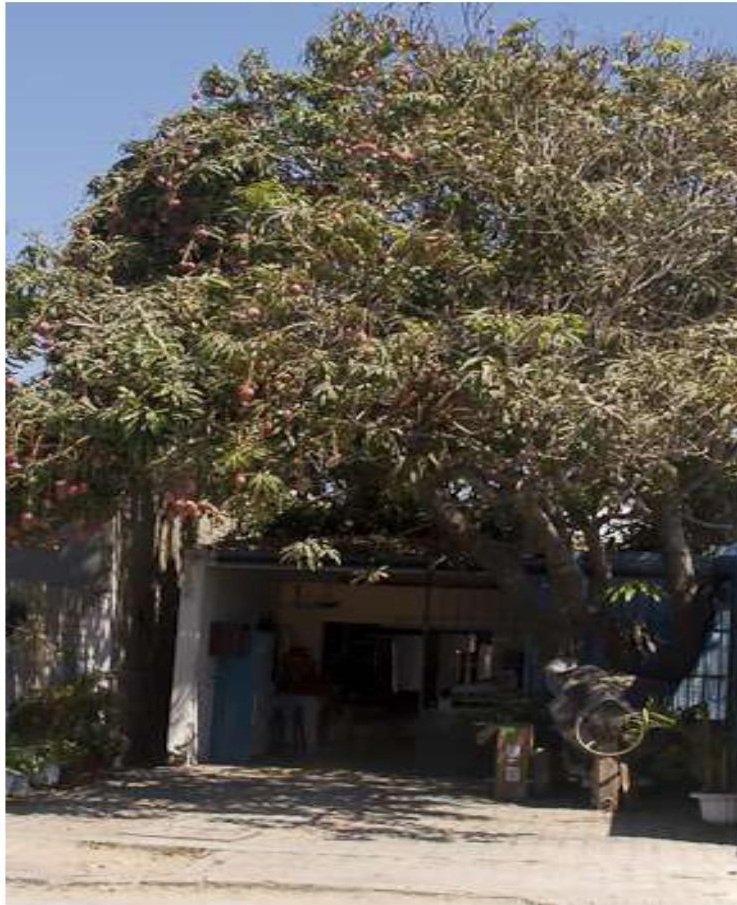
Download the full edition or view it online
—
Suzanne A. Marshall hails from western Canada and has been living the good life in Manzanillo over the past 8 years. She is a wife, mom and grandma. She is retired from executive business management where her writing skills focused on bureaucratic policy, marketing and business newsletters. Now she shares the fun and joy of writing about everyday life experiences in beautiful Manzanillo, Mexico, the country, its people, the places and the events.
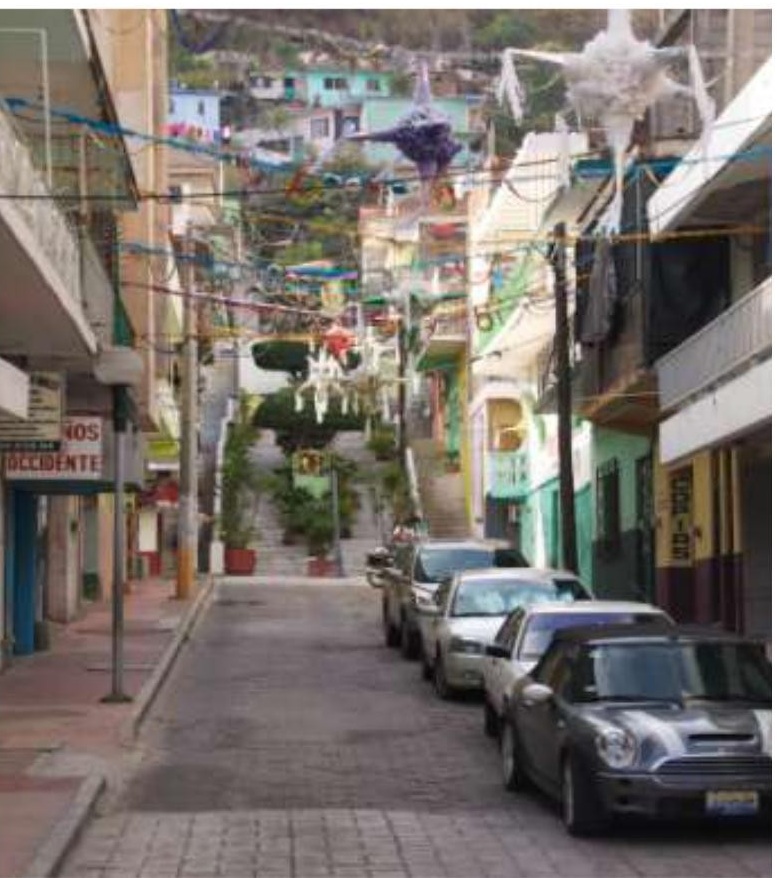



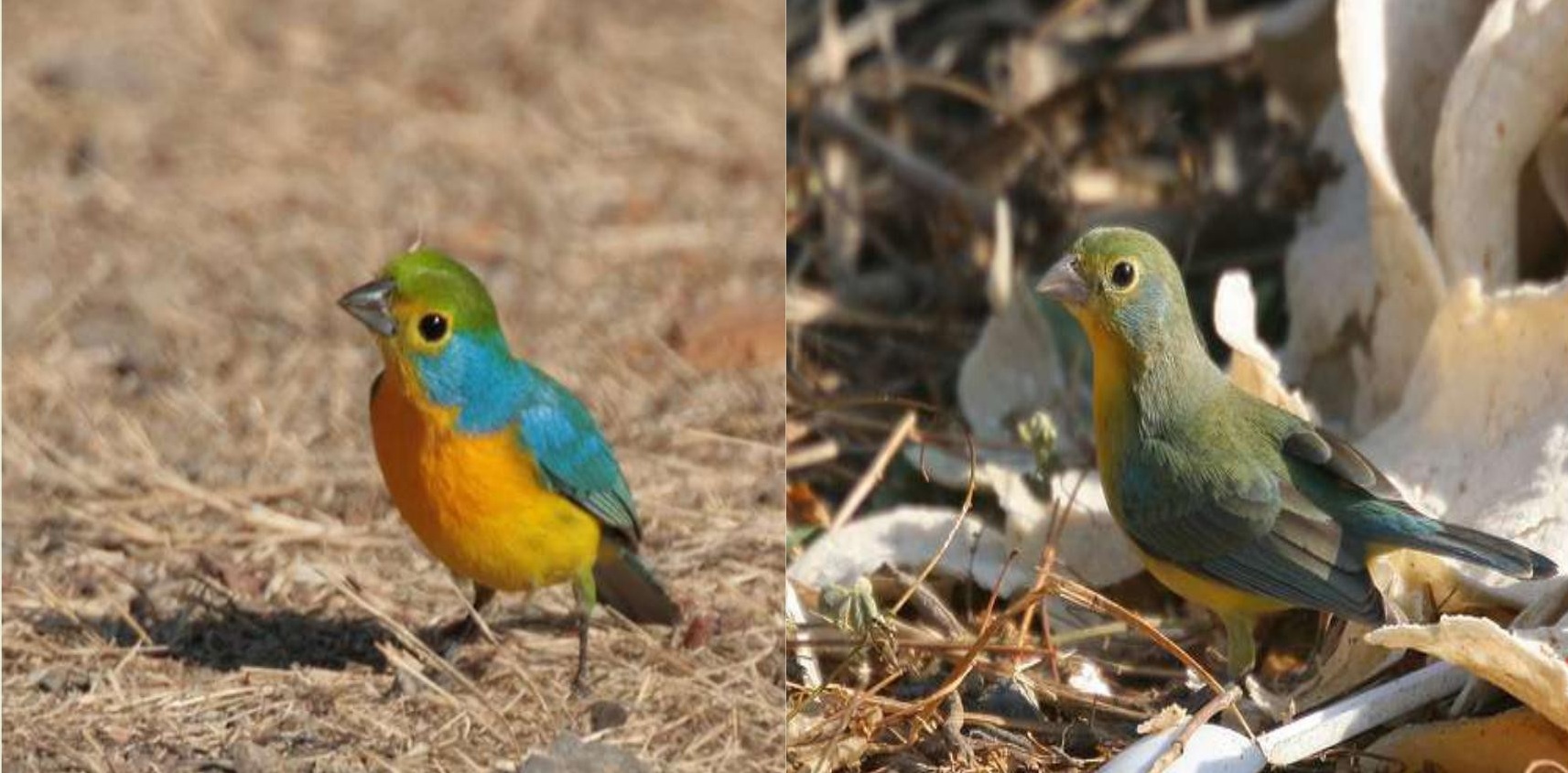
You must be logged in to post a comment.